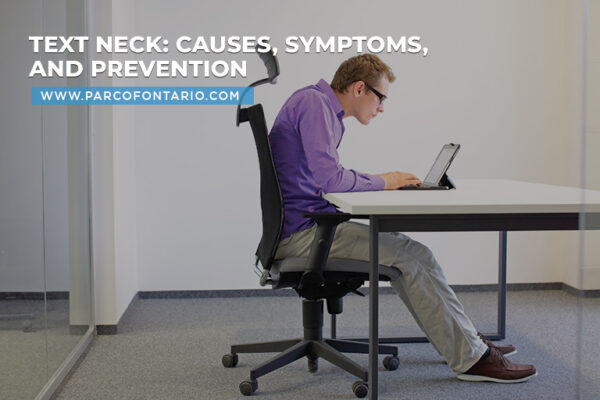
Text Neck: Causes, Symptoms, and Prevention
Many of us spend long hours hunching over our electronic mobile devices and laptops. As we spend more time texting, browsing social media, and reading on our devices, this constant downward gaze…
Read More
Musculoskeletal and orthopedic conditions are some of the most common long-term health issues. In fact, over 90 percent of Canadians will require orthopedic treatment at some point in their life. Shockwave therapy (SWT) was first used to treat kidney and gallstones; over time, it has proven successful in helping to heal many chronic conditions and lingering pain from a wide range of ailments. SWT is typically administered when more conservative methods (medication, rest, and physical therapy) have not provided adequate relief or healing. This non-invasive and relatively low-risk option is an effective method to add to your physiotherapy treatment plan.
Shockwave therapy creates a series of short, high-energy, pulsating acoustic waves that stimulate the body’s own natural healing response. Some patients report reduced pain and improved mobility after just the first session.
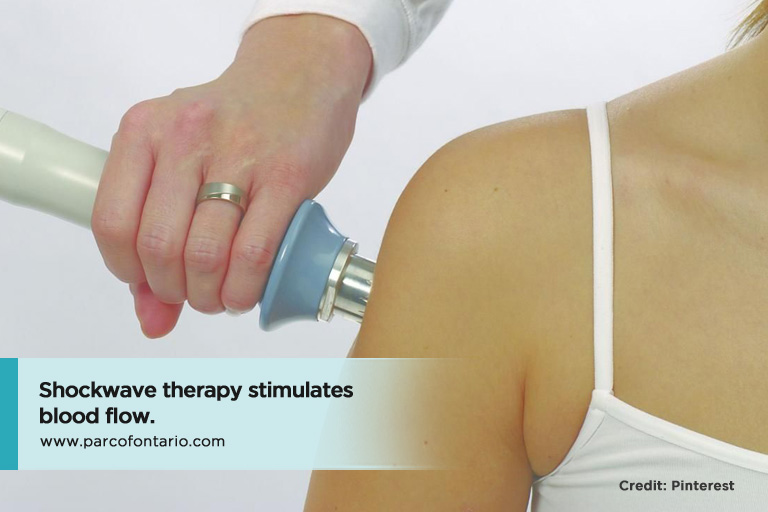
Also known as extracorporeal shockwave therapy, SWT has become a technique used by many physiotherapists to treat musculoskeletal conditions involving connective tissues (e.g. ligaments, tendons, muscles, joints) through the patient’s skin via a gel medium. A physiotherapist applies a special handheld probe (which produces the waves) onto the affected area for a short period of time. When used properly, shockwave therapy increases blood flow, breaks apart scar tissue, and reduces pain and muscle spasms.
SWT is typically administered once a week for three to six weeks. Each session lasts anywhere from five minutes to about 30, depending on the severity of the condition. While it may cause mild discomfort, the physiotherapist will adjust the level of intensity to keep you comfortable. SWT does not involve the use of needles or anesthetics and you can usually resume your normal activities the next day.
Shockwave therapy affects the body in several ways:

Along with more conservative treatments (e.g. physical therapy, nonsteroidal anti-inflammatory drugs, heel cushions, or quality orthotics services), SWT aids in treating chronic plantar fasciitis. The waves directly address inflamed fascia to target the affected heel. (A typical session takes about 10 minutes.)
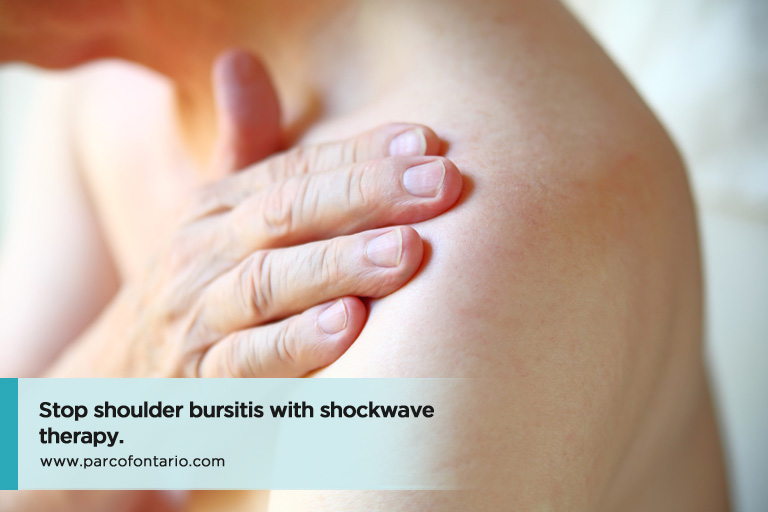
Most patients with bursitis report a reduction of pain and an improved range of motion after shockwave treatments. Depending on the severity of the condition, the total pulses administered varies greatly, from just one pulse per second up to 4,000; each session takes 14 to 30 minutes.
SWT is an effective rehabilitation treatment for patients with ITBS. It helps stimulate the natural healing of soft tissues and blocks sensory neurons (nociceptors) that initiate the sensation of pain. Increased blood flow in the area also promotes tendon repair.
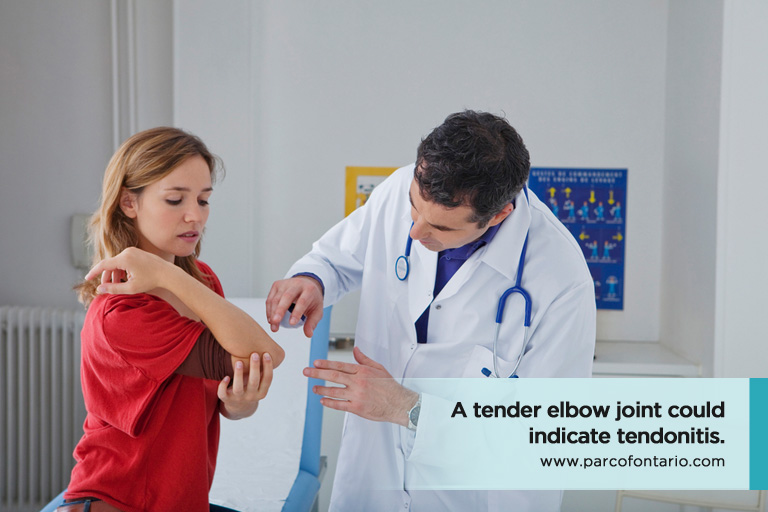
– Tendonitis – Tendonitis is an acute condition that causes inflammation of the tendons that connect muscle to bone. The affected tendons cause limited mobility and decreased muscle strength. Tendonitis is often caused by repetitive movements, poor posture, or arthritis and is more common in people over the age of 40. Common types of tendonitis include:
– Achilles tendonitis – affects the tendons between the heel and calf muscle
– Elbow tendonitis – tennis or golfer’s elbow
– Patellar tendonitis – also referred to as jumper’s knees
– Rotator cuff tendonitis – sometimes called pitcher’s or swimmer’s shoulder
– Biceps tendonitis – inflammation of the tendons between the biceps and shoulder
– Wrist tendonitis – also called bowler’s wrist
The sound waves stimulate regenerative and reparative processes in the inflamed tendon and improve neovascularization (increased blood supply) to promote healing. Patients undergo about six to eight sessions over the course of several weeks, with a period of about a week between each. With regular treatment, a significant increase in mobility can be observed in about four weeks.
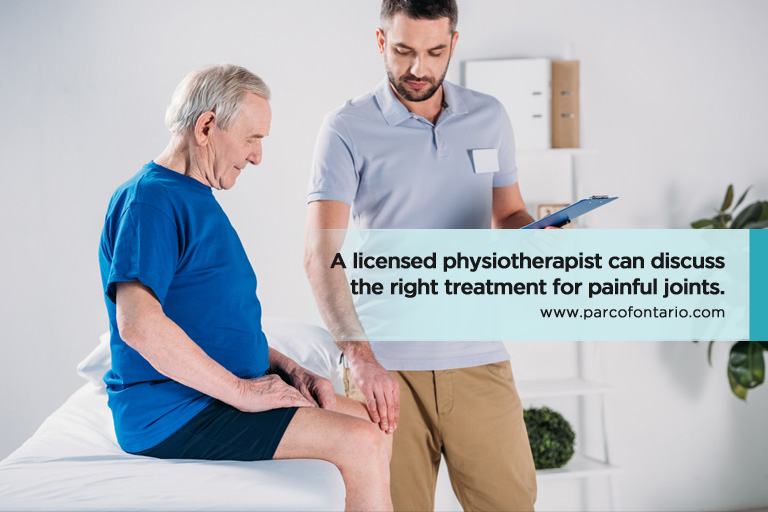
Several studies show that SWT is effective in treating muscle and joint pain. As research continues on the benefits of sound waves on the body’s ability to heal, SWT remains an excellent rehabilitation modality used by an increasing number of medical practitioners.
The Physiotherapy and Rehabilitation Centres of Ontario provide advanced treatment alternatives for orthopedic patients. All of our equipment is tested, maintained, and certified annually by a trusted third party. For professional shockwave therapy services in Ajax, call PARC Ontario at (905) 686-9081 to book an appointment.